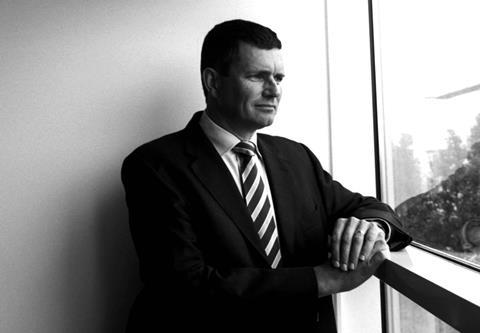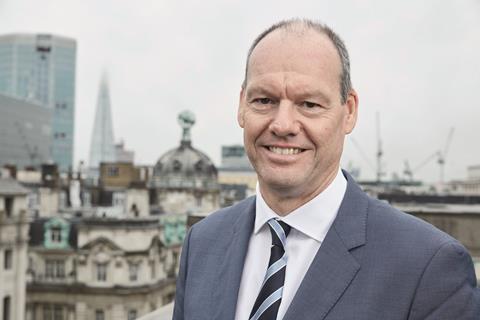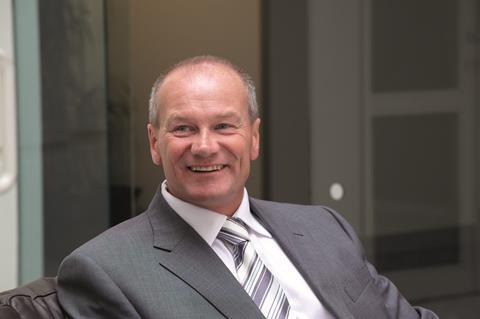Carillion’s collapse has exposed a crisis at the top of the construction industry – a shortage of influential bosses who can both turn a profit and offer leadership to help transform the sector. Joey Gardiner considers who might take on that crucial role

One of the consequences of the shock collapse of contractor Carillion at the start of the year has been the harsh light shone on the leaders of what was the second-biggest firm in the sector. MPs branded the directors – previously among the most respected in the industry – as “delusional” and “colossal failures”.
Beyond the company itself, these events raise questions about the quality of senior executives across the industry. They have also reinforced the description by Mark Farmer in his 2016 government-commissioned report, Modernise or Die, of the construction industry as financially precarious and confrontational. So far, Farmer’s recommendation of boosting modern methods of construction is more talked about than enacted, while little progress has been made on the wider aim of improving productivity, sustainability and exports outlined in the government and industry’s Construction 2025 strategy.
So, do the sector’s contractors, consultants and housebuilders have chief executives of the quality required to run successful, stable businesses and drive forward the improvements needed for construction to thrive in the future?
“The big question, though, is how we’re led as an industry. Do you want to change the industry or have the industry change you?”
Ann Bentley, Rider Levett Bucknall
An uneven picture
When it comes to leadership, the picture is not uniform. While many consultancies are limited partnerships, often with collegiate or rotating management structures, most housebuilders and contractors have more traditional set-ups, with a chair and chief executive structure. There is a feeling that, having learned the lessons of the credit crunch, the surviving housebuilders are now well run. Current leaders include a smattering of legendary entrepreneurs such as Tony Pidgley at Berkeley and Steve Morgan at Redrow, alongside a newer breed of professional PLC chief executives such as David Thomas at Barratt. Kevin Cammack, an analyst at financial adviser Cenkos, says: “By and large you’ve still got people who’ve lived through the 2009-10 recession and are suitably chastened by those days. Most people would regard [the housebuilding sector] as very well run.”
On the other hand, the perception is that contractors are not as blessed – given that they have racked up three major listed company failures over the past 10 years (Connaught, Rok and Carillion). A 2008 report by the Chartered Institute of Building found a “stark lack of leadership” in the industry, with many senior industry managers surveyed not able to name a single influential construction leader, and little sense that things have moved on since then. One listed contractor chief executive says: “I’d say the calibre is lower and the wages are particularly high in comparison to other industry sectors.”
James Wates, chairman of Wates group and a former chair of Build UK and the Construction Industry Training Board, says: “There are some fantastic people in the industry, but the challenge starts earlier – in school, when you’re trying to attract talent. Unfortunately, construction is at the back of the class.”
“You don’t see that many people really trying to innovate and push the industry on”
Iain Parker, Alinea
Beyond the business This perception doesn’t tell the whole story. Cenkos’ Cammack says the complexity and low capitalisation of big contractors, as well as the cut-throat competition, make them incredibly difficult businesses to run. “You make mistakes and it can be brutally painful,” he says. “It’s not quite fair to say all the best chief executives are in housebuilders – I think most contractors could comfortably run a housebuilder, but I’m not so sure whether it’d work the other way round. There are examples of good leadership.”
But even if some construction chief executives are managing well in tough circumstances, can they offer leadership in a broader sense? Ann Bentley, global board director of consultant Rider Levett Bucknall, explains: “There are some phenomenally able people in construction that would be a credit to any industry – just to survive in construction, companies have to be well-led. The big question, though, is how we’re led as an industry. Do you want to change the industry or have the industry change you?”
Certainly, there are relatively few contractors who are known for going out on a limb for the purpose of wider industry change. “You don’t see that many people really trying to innovate and push the industry on,” says Iain Parker, partner at consultant Alinea.
But again here, the industry’s structure makes it difficult. “The industry is so fragmented, so no one can take a leadership role on behalf of the sector – no one has the scale,” Wates says. This job is even tougher at publicly listed firms, where the greater scrutiny makes it tough for any chief executive to justify spending time on things that don’t obviously benefit the share price. “It’s difficult for CEOs of PLCs to put their head above the parapet to shape the industry. Shareholders start asking questions,” Wates adds.
Consequently, says Cammack, “the real innovators seem to be largely in the unquoted [privately owned] sector, where they’ve not got the same pressures to perform on a weekly basis”. Laing O’Rourke’s Ray O’Rourke is an obvious example – albeit in a company with mixed financial results in recent years. Wates mentions others: Neil Martin at Lendlease Construction and Andy Steele at Osborne.
Given these multiple challenges, who is providing great leadership in housebuilding, construction, consulting and contracting? Building has gathered six top contenders.
Contractors

Who: Andrew Wyllie, chief executive
Company: Costain
Profitability: The firm made £39m in pre-tax profit last year, its fifth consecutive annual increase, on turnover of £1.73bn.
Pre-tax margin: 2.25%
Share price: In the last year Costain’s share price has been stable, consolidating considerable gains made in early 2017. It is more than double its low point after the recession in 2011.
Fat cat-ometer: Wyllie took home £1.67m in salary and benefits in 2017.
Strengths: Wyllie is credited with reshaping Costain during the recession by shearing out risky building contracts and focusing on much less risky infrastructure contracts that are not let on fixed-price contracts. Where others have been hurt by problem contracts, Costain has revealed no nasty surprises. A rival chief executive says: “He’s done brilliantly and really made everyone aware of what exactly Costain is and what it’s good at.”
Could do better? Not a flamboyant self-promoter, Wyllie has not been known for engaging in the wider industry. However, this is changing, with Wyllie due to take up presidency of the Institute of Civil Engineers in November.

Who: Mark Reynolds, chief executive
Company: Mace
Profitability: The most recent accounts for 2016 recorded the first fall in profit in the company’s history to £10.7m, on revenue of £2.04bn.
Pre-tax margin: 0.5%
Share price: n/a – private company
Fat cat-ometer: The report records £486,000 as the amount awarded to Mace’s highest-paid director. It is not clear if this is Reynolds, however.
Strengths: A big personality, Reynolds proved himself at Mace as deputy programme director at the CLM joint venture, which oversaw delivery of the London 2012 Olympic Games. He was appointed chief executive in 2013. Turnover last year was nearly double the year prior to his appointment, while Mace has retained its reputation for quality. Reynolds has also developed into a spokesman for the industry, taking roles at London First and, most recently, a seat on the Construction Leadership Council. One listed contractor chief executive says: “He’s a real industry leader now.”
Could do better? Mace’s recent results ended its unblemished track record of year-on-year profit growth, raising questions of whether increasing revenue has been prioritised above the bottom line.

Who: John Morgan, chief executive
Company: Morgan Sindall
Profitability: The firm made £65m in pre-tax profit in 2017, up by half from 2016, on revenue of £2.8bn. Pre-tax margin 2.3%
Share price: At 1,490p more than double its value just two years ago, Morgan Sindall’s share price was the best-performing in construction in 2017.
Fat cat-ometer: Morgan made £2.58m in 2017, which largely reflected the share price-linked bonuses.
Strengths: Morgan is the last remaining owner-driver in the listed contracting sector, having co-founded Morgan Lovell in 1977 before entering the stock exchange with the reverse takeover of public company William Sindall. Appointed chair in 2000, John Morgan re-entered the fray as chief executive amid the recession in 2012, giving business unit chiefs real operating responsibility and instituting a regeneration-focused strategy that has started bearing fruit in the last two years. Cenkos’ Cammack says: “He’s a delegator, and he doesn’t seek personal credit, but he’s had a phenomenal couple of years.”
Could do better? Morgan isn’t the charismatic showman type, and has made no attempt to perform a wider industry leadership role, preferring instead to focus on his own business.
Consultants

Who: Ann Bentley, global board director
Company: Rider Levett Bucknall
Profitability: The firm doubled its UK pre-tax profit in the last year to £880,000 on fee income of £50.1m. Globally it turns over £225m and made £31m in profit last year.
Pre-tax margin: 13.8%
Share price: Private company.
Fat cat-ometer: The firm’s highest-paid director takes home £178,000, though this doesn’t include dividend payments.
Strengths: Since being appointed the rotating global chair role at Rider Levett Bucknall in 2015, Bentley has cemented her reputation in the sector by leading one of the UK’s most successful consultants. She stands out, however, for her contribution to the public debate on how to reform the construction industry, with Bentley taking a key role on the Construction Leadership Council looking at procurement reform.
Could do better? The financial performance of the UK business, which Bentley is most closely involved with, has been eclipsed by others in the group, which report much greater profitability.
Housebuilders

Who: Greg Fitzgerald, chief executive
Company: Bovis Homes
Profitability: The firm reported profit of £114m in 2017, down sharply on the previous year as per revised targets, on revenue of £1.03bn.
Pre-tax margin: 11.1%
Share price: The value of the firm’s shares has increased by almost 50% since Fitzgerald started in April 2017 and is now, at 1,232p, above its pre-crash peak.
Fat cat-ometer: Fitzgerald, starting at Bovis last April, made £1.29m in salary and benefits in 2017 for just eight months’ work. He also received an award of shares under a long-term incentive plan worth a further £1.3m, subject to performance.
Strengths: The charismatic Fitzgerald was appointed to return Bovis Homes to its former glory after more than 10 years in charge of construction and housebuilding group Galliford Try. In his time at Galliford Try he set up two housebuilding businesses, before, as chief executive, audaciously expanding Galliford’s housebuilding business in the depths of the recession with the creation of Linden Homes. The gamble paid off, turning Linden into a top 10 housebuilder. His rescue plan for the formerly ailing Bovis has been well received by investors. Analyst Tony Williams of Building Value says: “Greg Fitzgerald did a magnificent job at Galliford Try. Hiring him at Bovis was a coup de grace and he has taken the bull by the horns there and is sorting it out.”
Could do better? Fitzgerald isn’t known for engaging in the wider housing industry, and is somewhat of a technophobe – he told Building in 2010 that he had never sent an email and didn’t know how to switch on a computer.

Who: Peter Redfern, chief executive
Company: Taylor Wimpey
Profitability: Taylor Wimpey made £682m in pre-tax profit in 2017, down on 2016, on revenue of £3.97bn. Pre-tax margin 17.2%
Share price: Taylor Wimpey shares have risen 5% in the last year to 188p and are now 20 times the level seen in the depths of recession.
Fat cat-ometer: Redfern took home pay and benefits worth £3.09m in 2017.
Strengths: A former KPMG accountant, Redfern was one of the first housebuilder chief executives to come from the finance director route – setting a trend that others have followed. Having overseen the merger between George Wimpey and Taylor Woodrow, Redfern earned his stripes turning the business around after the credit crunch hit. Still in his 30s at the time, he kept the banks on-side despite Taylor Wimpey announcing the biggest ever loss by a UK housebuilder and is credited with turning it back into a profitable and well-managed business that is still the second-largest in the sector. He has also increasingly engaged in wider industry issues, delivering a detailed report for the Labour Party on home ownership. One peer says: “He’s very socially minded and impressive, but he’s also a hard-nosed businessman, good on numbers.”
Could do better? With a no-nonsense style, Redfern isn’t known for wasting time by turning on the charm.
Key clients leading the way
Key to industry reform is the attitude of major construction clients to their procurement. Sir John Armitt, chair of the National Infrastructure Commission, says: “In terms of rising to the industry’s challenges, the primary leadership has to come from the client side. They create the demand and opportunities and set the rules by the nature and way they create them.” So which clients are leading the way?
Anglian Water
The water company’s alliance operations director Nick Dale has been at the forefront of efforts to improve infrastructure procurement across the industry through his leadership of the Infrastructure Clients Group and its Project 13 initiative. But he has also walked the walk at Anglian Water by procuring 15-year framework deals with suppliers to encourage investment and improvement.
Argent
Argent, with its flagship scheme in London’s King’s Cross and others in Manchester and Birmingham, has long had a reputation for good placemaking. But it has also gained plaudits for the way that it interacts with its supply chain, keeping its commitment to long-term partners – Bam, Carillion and Kier – throughout the long recession when other clients sought bargain basement prices through single-stage tendering.
GPE
Great Portland Estates has been one of the biggest developers in London in the last decade, with schemes such as Rathbone Place and 240 Blackfriars. However, it is the commitment to BIM – which it makes compulsory on all projects – and partnership working that make GPE different from many other blue-chip clients.
Highways England
The quango in charge of the strategic road network has had its critics over the years but has been a big winner from recent government spending decisions, and has a chief executive, in Jim O’Sullivan, who is committed to reforming the way it procures – including by direct engagement with tier-two contractors. RLB’s Ann Bentley says: “Highways England is bringing in really different ways of working.”

Lipton Rogers
Currently building out its first scheme – the ambitious 22 Bishopsgate – this is a firm whose pedigree, combining development and construction legends Sir Stuart Lipton and Peter Rogers, is already coming across, according to its suppliers. Iain Parker at consultant Alinea, which is working on the project, says: “Peter Rogers has the passion and energy to continue to challenge consultants and the industry in a way that’s an inspiration to the younger generation.”

Building Awards 2018
Now is the time to nominate those you have most admired this year
The Building Awards are set to recognise and reward genuine excellence among the construction industry, and leadership is a quality we are celebrating in three key categories.
The entry deadline is fast approaching, so register today to nominate a colleague, a boss or someone you know who’s really made an impact.
Nominations are invited for:
- Construction Client of the Year, Sponsored by Mott MacDonald
- Building Magazine Personality of the Year, Sponsored by Hays
- CEO of the Year
Remember, there is work to be acknowledged and achievements for everyone to celebrate, with 23 categories covering the breadth of the construction industry.



























No comments yet